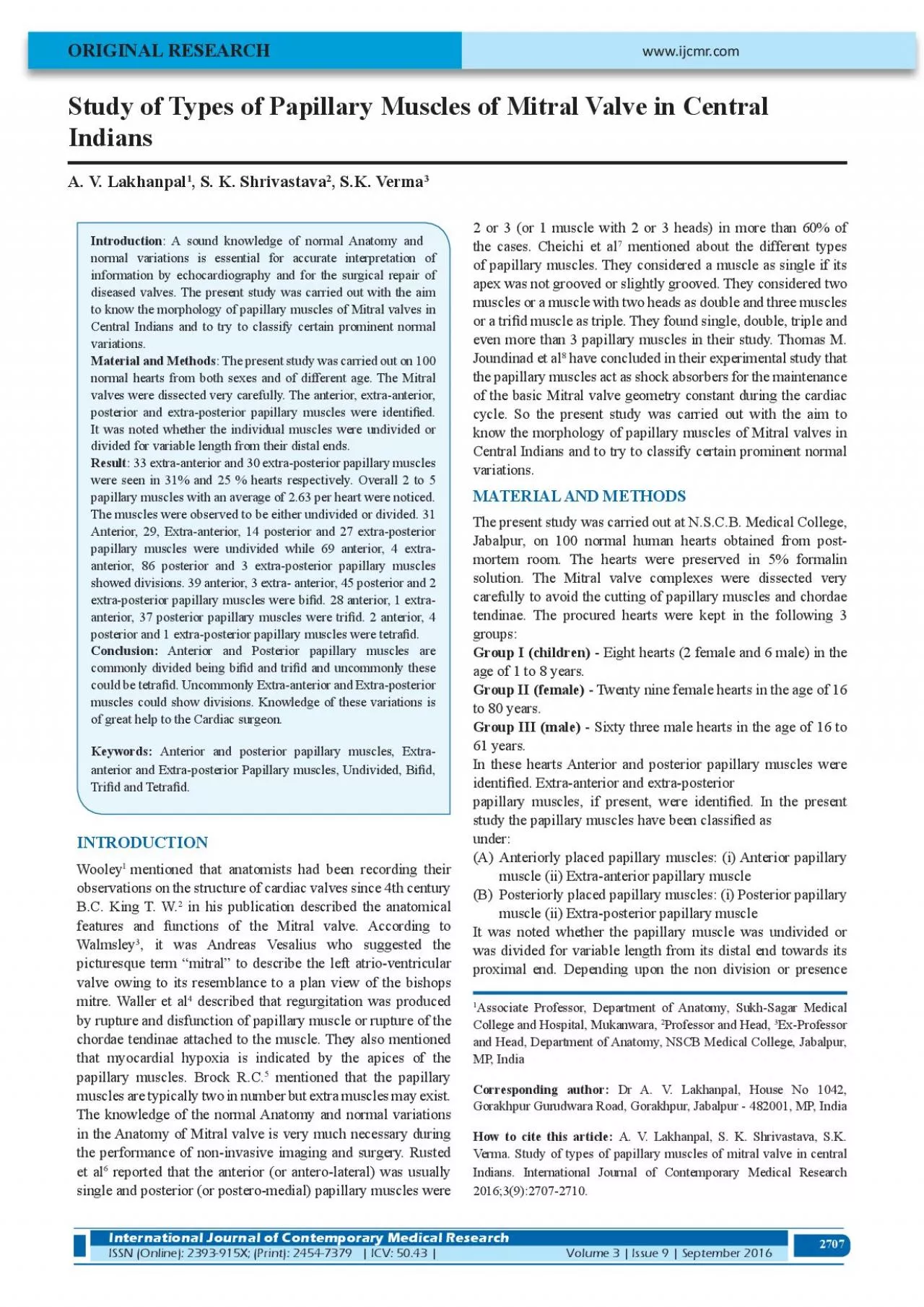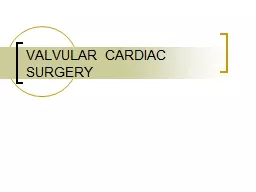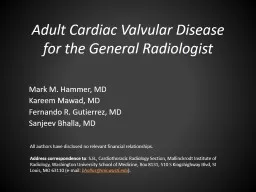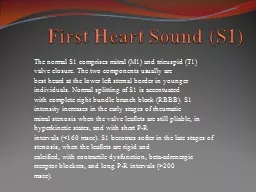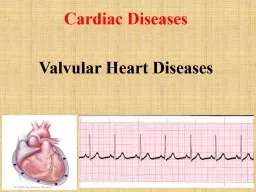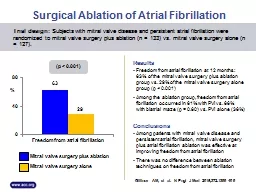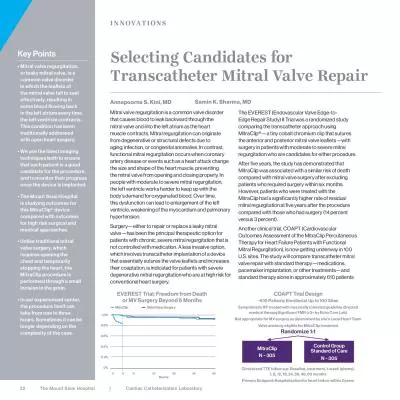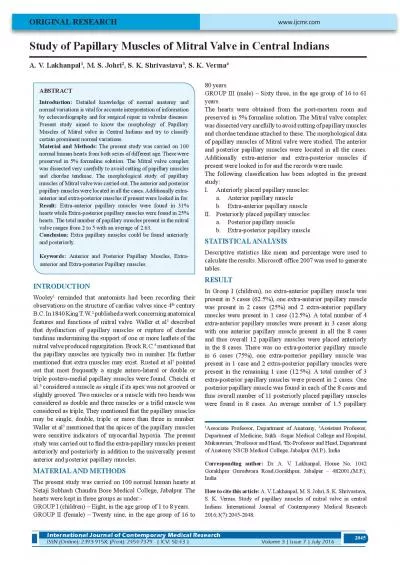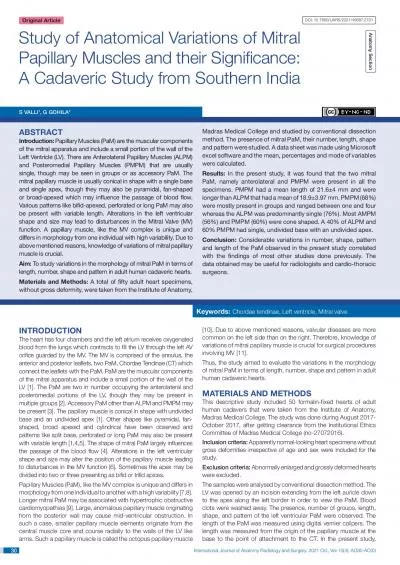PDF-Study of Types of Papillary Muscles of Mitral Valve in Central
Author : abigail | Published Date : 2022-09-02
2707 Indians A V Lakhanpal 1 S K Shrivastava 2 SK Verma 3 ORIGINAL RESEARCH Introduction A sound knowledge of normal Anatomy and normal variations is essential
Presentation Embed Code
Download Presentation
Download Presentation The PPT/PDF document "Study of Types of Papillary Muscles of M..." is the property of its rightful owner. Permission is granted to download and print the materials on this website for personal, non-commercial use only, and to display it on your personal computer provided you do not modify the materials and that you retain all copyright notices contained in the materials. By downloading content from our website, you accept the terms of this agreement.
Study of Types of Papillary Muscles of Mitral Valve in Central: Transcript
Download Rules Of Document
"Study of Types of Papillary Muscles of Mitral Valve in Central"The content belongs to its owner. You may download and print it for personal use, without modification, and keep all copyright notices. By downloading, you agree to these terms.
Related Documents

